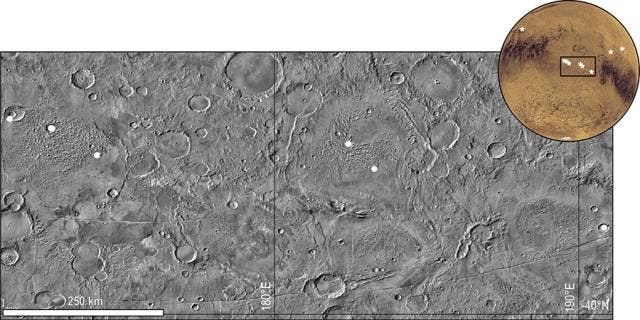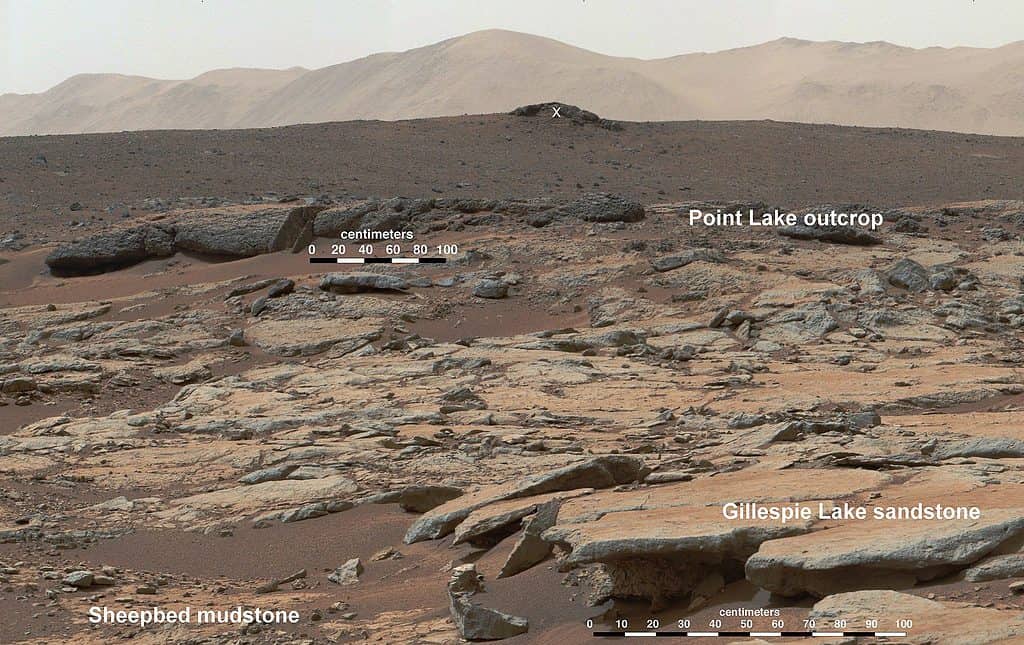Our planet’s crust is constantly circulating, with parts of the crust being pushed down and recycled into the mantle, and new parts being created in other parts of the world. But Mars isn’t like this. Mars doesn’t really have plate tectonics, and while the crust on our planet is constantly destroyed and recreated, the crust on Mars is stable and also quite uniform, consisting of a volcanic rock called basalt.
Still, it’s pretty surprising that the entire crust is so uniformly basaltic. This has even prompted a theory that Mars may have formed via a titanic collision of rocks in space that triggered enough heat to liquefy the rocks, creating what is called a magma ocean. This magma ocean would have gradually cooled, creating a thin, skin-like basaltic crust.
But in a new study, researchers found something you wouldn’t really expect in a purely basaltic setting, and this has important implications for the evolution of Mars.

“There is more silica in the composition that makes the rocks not basalt, but what we call more evolved in composition,” says Valerie Payré, assistant professor in the Department of Earth and Environmental Sciences at the University of Iowa and the study’s corresponding author. “That tells us how the crust formed on Mars is definitely more complex than what we knew. So, it’s more about understanding that process, and especially what it means for how Earth’s crust first formed.”
This unusual concentration was brought to light by the impacts of meteorites on Mars. It would normally be buried under several kilometers of material, but researchers found several sites where collisions brought the material to light.
The first clue came from nine locations where researchers discovered feldspar — a mineral that is associated with lava flows, but not with basaltic lava flows. From thereon, researchers suspected there could be more to Martian geology than expected.
“This was the first clue,” Payré says. “It is because the terrains are feldspar-rich that we explored the silica concentrations there.”
But it wasn’t a straightforward path. The analyzed feldspar sites showed that still, the geochemistry in the area was predominantly basaltic. But Payré and colleagues didn’t give up. They turned to another instrument, THEMIS, which can detect silica concentrations through infrared wavelength reflections from the Martian surface. With the data from THEMIS, the team showed that the terrain at some locations was more silicic than basaltic.
The findings were also backed by observations from the rovers on Mars, which often found non-basaltic (silicic) rocks.
“There have been rovers on the surface that have observed rocks that were more silicic than basaltic,” she says. “So, there were ideas that the crust could be more silicic. But we never knew, and we still don’t know, how the early crust was formed, or how old it is, so it’s kind of a mystery still.”

So what does this mean?
Well, for Mars, it is a sign that the crust geochemistry is more complex (more “evolved) than thought. It could mean that the magma ocean that formed wasn’t all-encompassing, and some parts of the Martian crust may have had a different origin. There could also be other mechanisms that played a key role in the formation of the Red Planet and that are linked with these newly-discovered minerals, but the planet’s early history is still unclear
For Earth, early history is even more shrouded in mystery. Whereas Martian crust remained in place, Earth’s crust was recycled, and doesn’t really have any surviving rocks from the very first period after the planet cooled down. But understanding Mars could help us also understand the Earth.
“We don’t know our planet’s crust from the beginning; we don’t even know when life first appeared,” Payré says. “Many think the two could be related. So, understanding what the crust was like a long time ago could help us understand the whole evolution of our planet.”
The study was published in Geophysical Research Letters.





